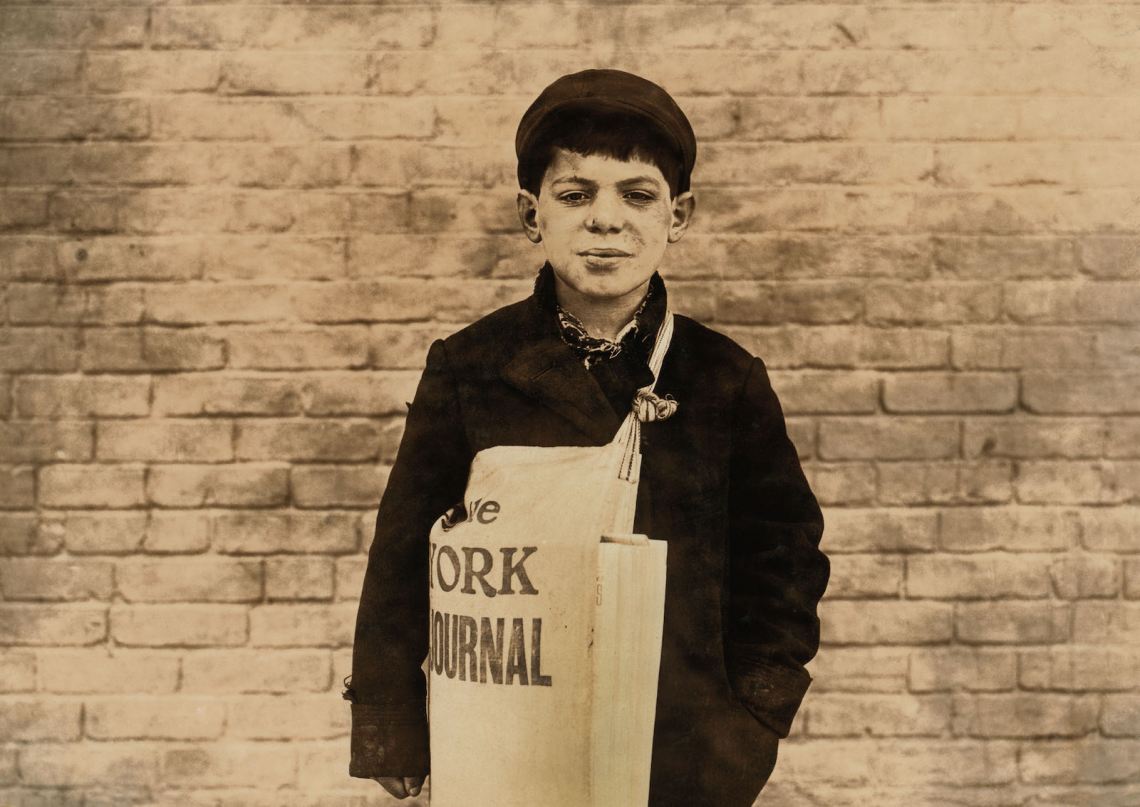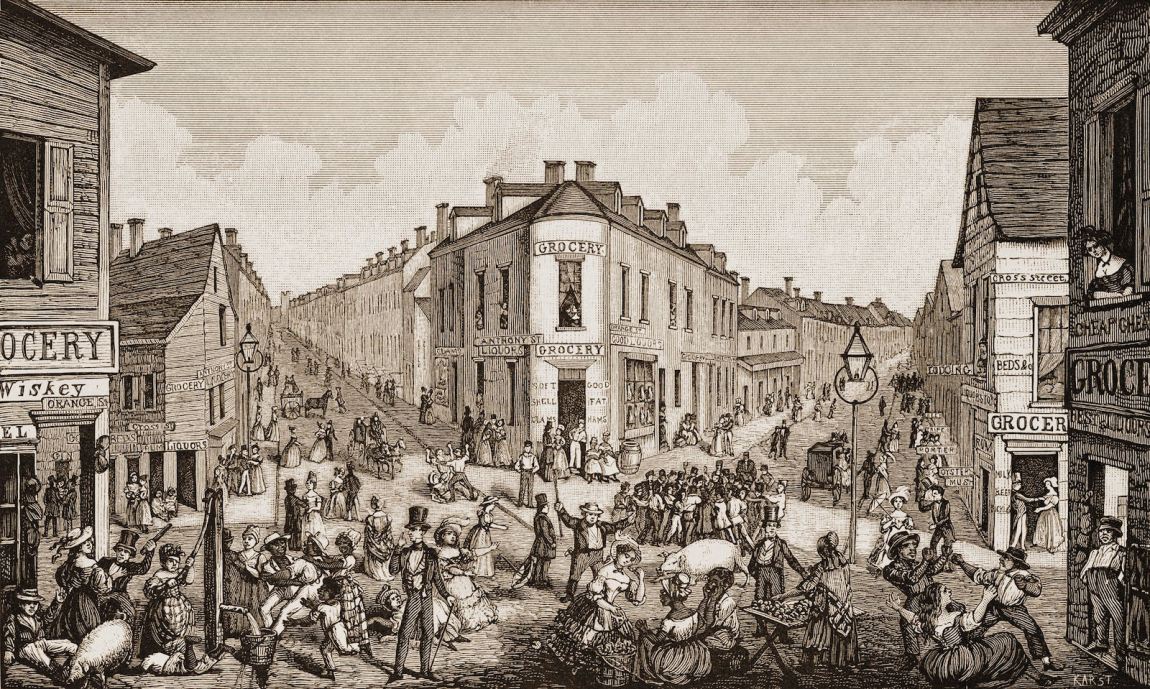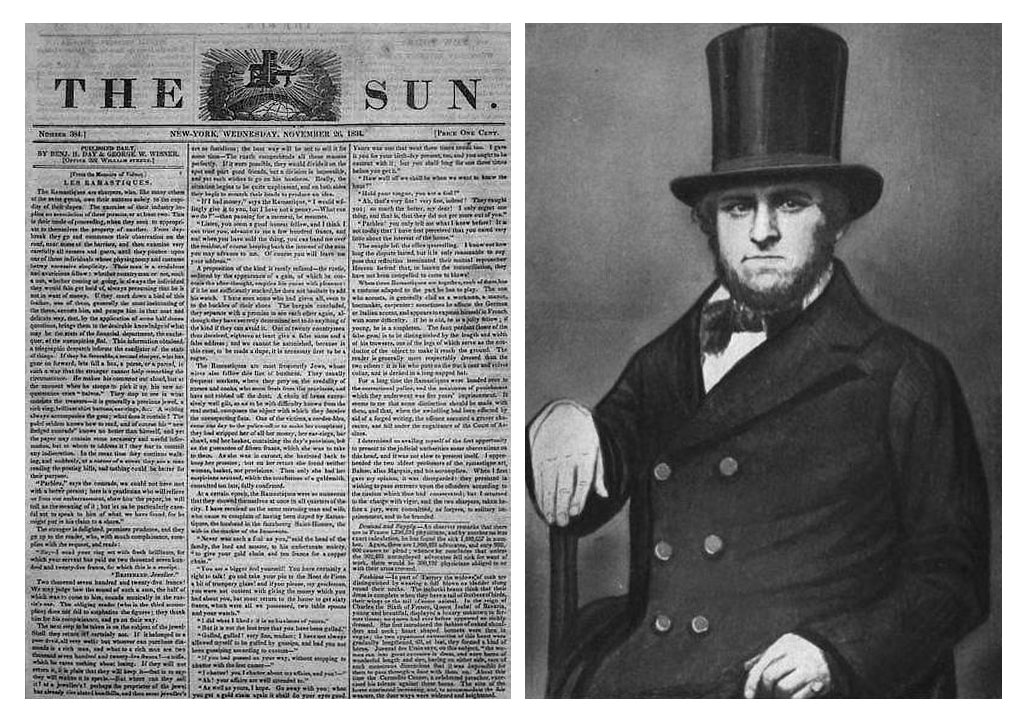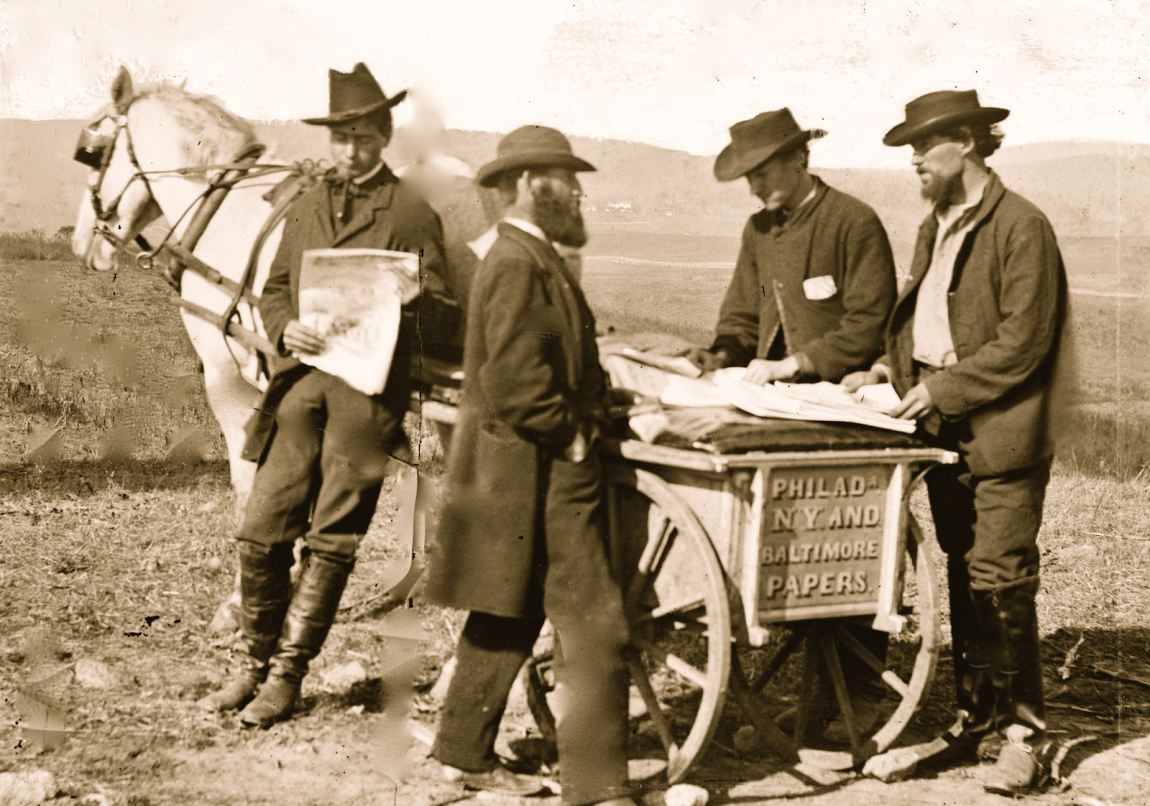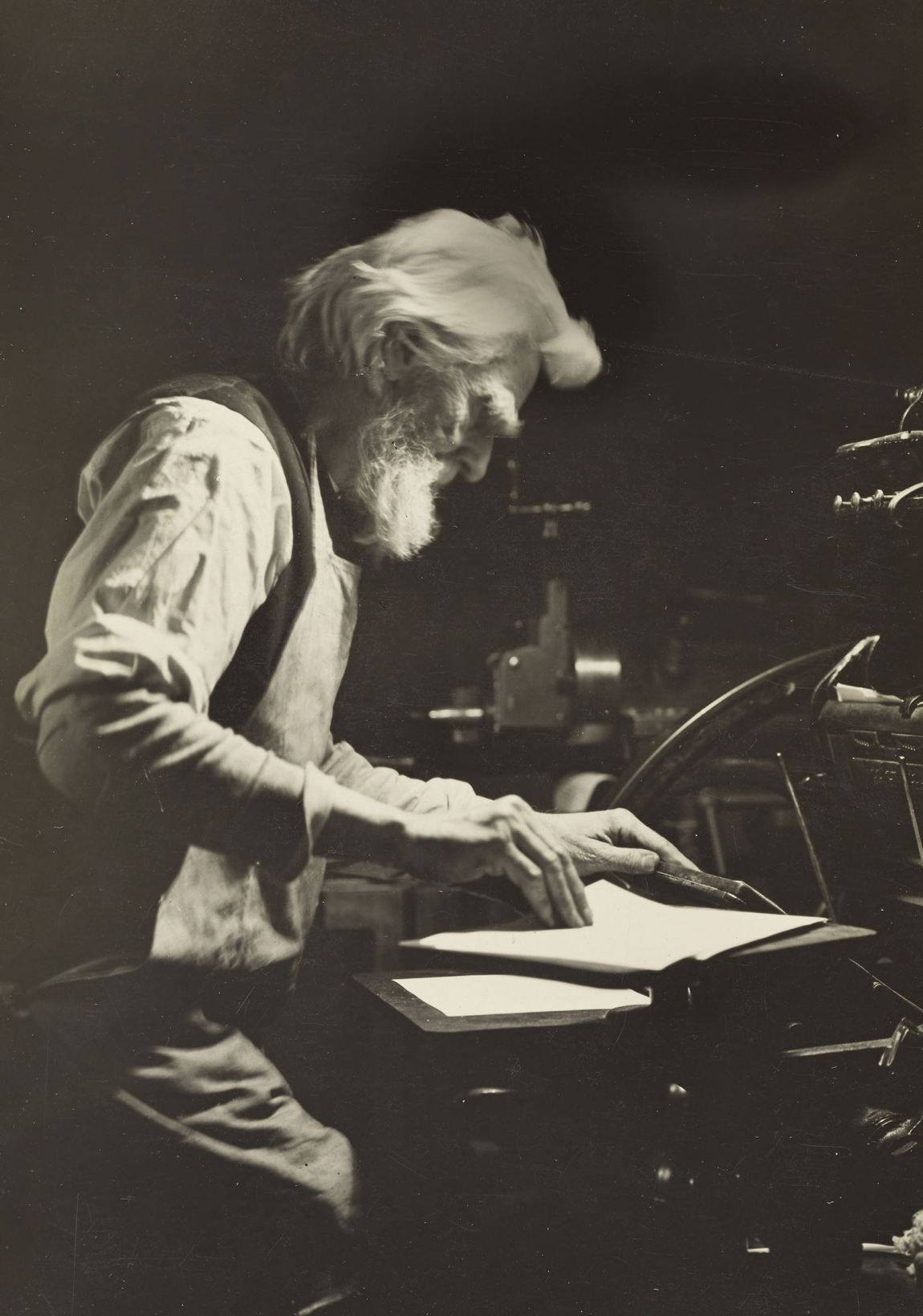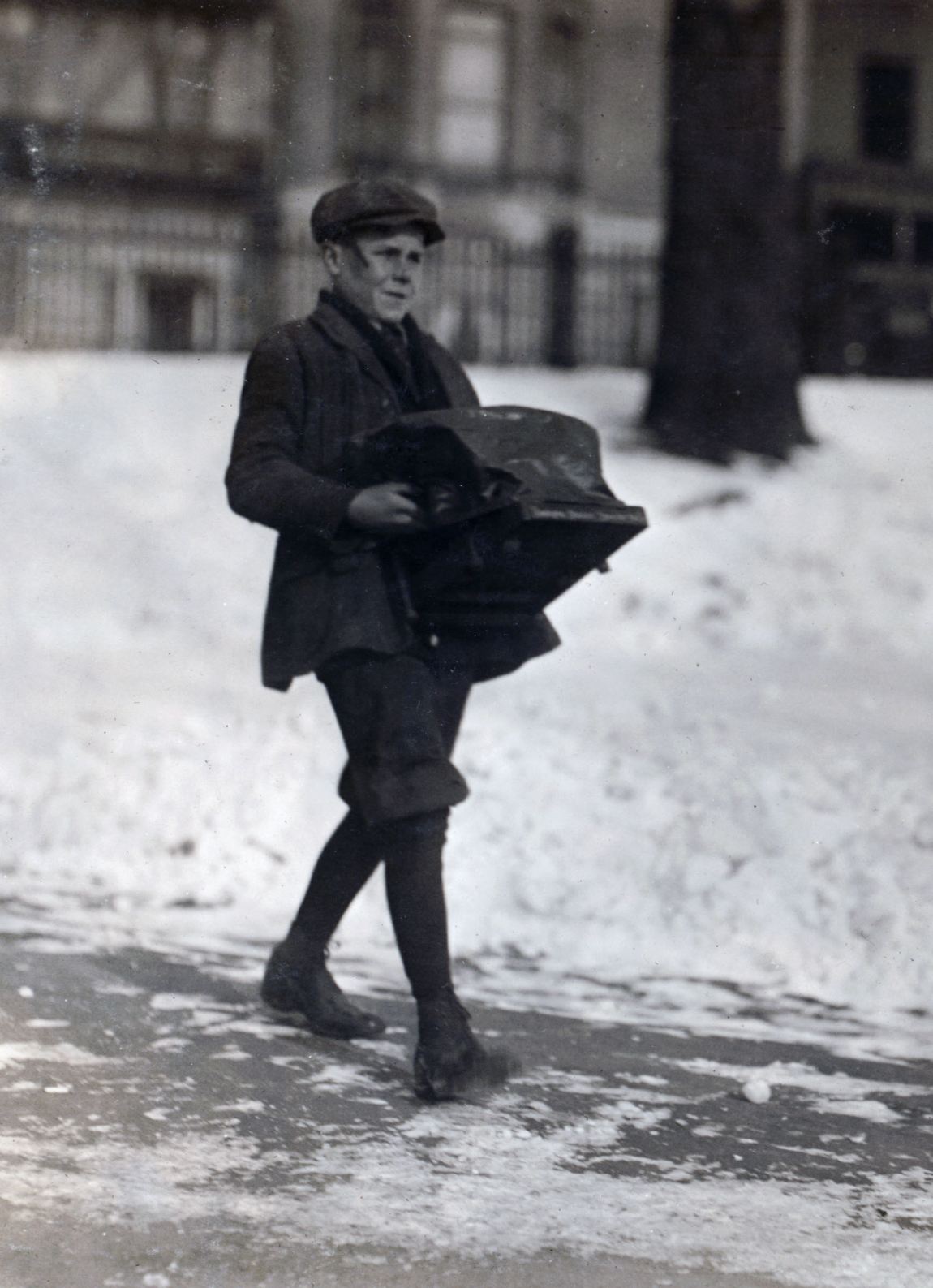When Benjamin Day came up with the plan of selling newspapers to the poor in 1833, he did so with the ravenous maw of poverty threatening to swallow him up. Born in 1810 in Springfield, Massachusetts, to a hatter, Day was pulled out of school when he was fourteen to apprentice to a weekly paper. The work involved long hours setting type, letter by letter, line by line, then pulling the heavy levers of the presses, over and over, hundreds of times a night. It was hard physical labor, and though Day would become a very successful journalist and then businessman, he would never stop identifying with the working class.
By the age of twenty, Day knew the trade well enough to make a new start, and in 1829, he moved to New York City. The sights and smells that greeted him were like nothing a small-town boy could have imagined. New York was undergoing an industrial revolution that was making a few people very rich. Carriages took them from their homes uptown to their jobs on Wall Street, in the stock market and in banking, and back again. By 1828, the top 4 percent of taxpayers owned half the City’s assets.
It was a time, in other words, much like our own, and the city was transforming itself to meet the demands of the affluent. New York was taking on a larger and larger share of the nation’s business, especially its import business, and when Day arrived in New York, the first sight that greeted him would have been the hundreds of ships crowding the city’s harbor and piers, bobbing optimistically in the morning sun. As night fell, Day would have seen the city’s newly installed gas lighting, the cast-iron lines running up and down the main commercial streets, illuminating them with streetlamps. He would have seen New York’s stores open late into the evening, lit from within.
But for most of New York City’s residents, the wares in those shops were impossibly out of reach. The lights on Wall Street, Pearl Street, and Battery gave way to the smells of the Bowery, where many lived in abject squalor amid the stink of slaughterhouses and the refuse that poured out of them. The Bowery was overrun with feral hogs; the poor New Yorkers who fed off them lived in tiny tenement apartments with nowhere to keep their pigs. There was also the problem of waste, rarely collected in poorer neighborhoods, where heaps of mud, trash, and animal excrement piled up on the streets, a reeking mélange to which was added the garbage of the slaughterhouses, dyers, distilleries, and tanneries.
Between the rising business class and the abject poor were the laborers and artisans. The latter, skilled workers like masons and cabinetmakers and tailors and caulkers, found themselves gradually losing wages, status, and independence as industrial methods and factory production increasingly took over manufacturing in the 1820s. Still, they rarely went on strike, in large part because New York City’s press would uniformly condemn such actions and cast labor agitators as dangerous criminals.
The press in which Benjamin Day sought work in 1829 was very little like the newspaper business of late nineteenth century. The muckraking journalism of the Progressive Era was still decades away. The city’s newspapers were then geared at just two readerships: the economic elite and the political one (insofar as they were at all distinct). If you were a well-to-do businessman, you were served by the mercantile sheets, which contained details of shipping schedules, wholesale prices, and ads, along with what we might think of as news. And then there were papers for the political class—“typically as unentertaining as their mercantile brethren,” writes Susan Thompson in The Penny Press: The Origins of the Modern News Media, 1833–1861.
Nevertheless, because New York was such a hub of trade and industrial development, there was a rapidly expanding market for information. By 1828, the year before Day arrived in New York, 160,000 papers were shipped monthly from New York’s post office. By 1833, it would be a million. Against this background of rising demand, Day did not struggle to find work, quickly landing a job as a compositor at the New York Evening Post. It was a typical paper of the time, full of stilted writing and political editorials, “written by highly educated editors for an elite readership,” Thompson notes.
Day would not stay there long. He was a quiet man, proud of his humble origins. But he also had a restlessness beneath a brusque, practical exterior, and he was excited about the new industrial technology, the steam presses that were beginning to change the print trade. And he was interested, too, in political change, soon finding himself on the periphery of the new Workingmen’s Party. He became one of six Workies who started a new paper, the New York Daily Sentinel, a radical newspaper that would support the party and was produced, as they proclaimed in the first issue, by printers who “have, in common with their fellow laborers in every branch of industry, participated largely in the distress which pervades the producing classes of this community.”
Advertisement
Like many such ventures, the Daily Sentinel struggled with factionalism, but, above all, it struggled to make sales. Although there was already a high level of literacy among Americans, who were the most literate people in the world at that time, for many, the Daily Sentinel, along with other newspapers, simply cost too much. A daily paper in New York City in 1830 cost six cents, not that you could buy just one; newspaper proprietors preferred their customers to pay for a yearly subscription at about ten dollars a year. That was a week’s wages for a skilled journeyman like Day, and an astronomical sum for working-class New Yorkers at a time when a domestic servant made just five dollars a month.
Despite its pro-labor perspective, the Daily Sentinel managed to squeeze down its costs only so far as to charge eight dollars a year for a subscription. In 1832, after just a few months at this doomed enterprise, Day left to work at another six-cent daily, The New York Journal of Commerce. And that’s where he met another journeyman compositor by the name of Dave Ramsay. Together, the two would change the newspaper business forever.
Ramsay had heard about a newspaper in London that sold for just a penny—and he wanted to start such a penny paper in New York. The Sun, as he planned to call it, would be well within the daily budget of most working people. After all, what was a penny? It was the price of an apple, a candle, a shoelace. Ramsay would talk compulsively about the idea, and Day was soon as obsessed as he was. Once, he ran off a dummy headline for their imaginary paper and showed it to a printer friend named Abell. He, however, was less enthusiastic. “Abell made no end of fun of [the idea],” Day recalled fifty years later. “Every time we met, he would say, ‘Well, Day, how is that penny Sun? Ha, ha! Ho, ho!’”
But Day was too practical to take a chance on the idea, and too broke. He had left Dave Ramsay and the Journal of Commerce to start his own print shop, but commissions were scarce. There was a cholera epidemic raging through the city in 1832, which decimated the economy. Day moved his family to Duane Street in downtown Manhattan, in the working-class Fifth Ward. The neighborhood was just a few blocks away from Five Points, a notorious slum that vied with London’s East End to be the world capital of prostitution, violent crime, unemployment, disease, overcrowding, and infant mortality. Struggling financially to maintain the print shop and support his wife, their newborn child, and another on the way, Day was daily assaulted with the sights and smells of the life that awaited him a few blocks south—and a few rungs down the economic ladder—if he failed.
It was only with the stench of immiseration at his door that the cautious, risk-averse Day came up with a more practical way to rationalize the idea of a penny paper for the masses: What if he printed a flyer with news as an entertaining way to advertise his little printing shop? Thus was Day’s revolution—to make newspaper journalism accessible to the poor—devised not so much by luck or design as through sheer desperation.
It took him all day to print a thousand copies. In his exhaustion, Day misprinted the date of the first edition of The Sun. But finally, on September 3, 1833, there it was: the first edition of a paper that “shines for all” at a penny a day, The Sun. “The object of this paper is to lay before the public, at a price within the means of every one, ALL THE NEWS OF THE DAY, and at the same time afford an advantageous medium for advertising,” its editor declared.
Printing his paper was one thing, distributing and selling it was another; the whole scheme depended on getting The Sun into readers’ hands without demanding a lump sum upfront. Day, however, knew that amid the economic doldrums of the Jackson administration, thousands of men were unemployed—and he appealed directly to them: “TO THE UNEMPLOYED—A number of steady men can find employment by vending this paper. A liberal discount is allowed to those who buy to sell again.” Perhaps to his surprise, Day’s first job-seeker was not an out-of-work laborer but a ten-year-old boy from Cork, Ireland, named Bernard Flaherty. He was hired, at two dollars for the week, to sell a hundred papers. Day’s scintillating headlines—“Double Distilled Villainy! Arrest of an Arch Villain! Horrid Transaction! Outrage on a Post Office”—ensured that Flaherty, and the host of urchins who soon followed him to Day’s door, sold out again and again. Along with the penny press, the newsboy was born.
Advertisement
The first edition carried stories about murders in Columbus, Ohio, and Charlottesville, Virginia, a fire in Rochester, New York, a young man who took laudanum after a lover broke his heart, a prison riot in Ohio, and deaths by consumption and cholera in New York and Mexico. Day was ahead of his time in realizing his readers’ taste for true crime and anticipating the newsroom adage of “if it bleeds, it leads.” But Day wanted an additional element: local news. Yes, he wanted news of crime—but that was local news for the working poor of the city. Before The Sun’s first week was out, Day had engaged an unemployed printer named George W. Wisner to stake out courts early every morning and write up the police reports for The Sun. Wisner, who came to be known as “the Balzac of the daybreak court,” would mix in serious news with scandal and crime and human interest, a brew so potent that he was ultimately imitated even by his detractors at the more serious papers.
This was, though, the popular press, and Day was not above printing what was known as a “humbug.” The story that helped to establish The Sun as a mass circulation newspaper was the “Great Moon Hoax,” in which a scientist described the sights he had seen through a telescope on the moon, which included humanoid creatures covered in copper-colored hair with bat-type wings, who engaged in all manner of entertainment that “ill comport with our terrestrial notions of decorum.” (Day left it to readers to decide whether the story was true or not.) But Day also advocated vigorously for higher wages and shorter working hours. In 1834, he printed a manifesto by a group of striking girls at the Lowell Mill, Union is Power, in full. And when New York’s seamstresses went on strike, they had his full support, too. The Sun was “equal parts crusade and carnival,” as historian Matthew Goodman put it in The Sun and the Moon: The Remarkable True Account of Hoaxers, Showmen, Dueling Journalists, and Lunar Man-Bats in Nineteenth-Century New York.
And Wisner brought his own distinctive commitment: a lifelong hatred for slavery, which colored his journalism at a time when most New York newspapers were pro-Southern. Wisner was “always sticking in his d—d little Abolitionist articles,” as Day would put it, fifty years later. (Day, too, reviled the institution of slavery, though he did not approve of the radical Abolitionists; yet despite his complaints about Wisner, when Wisner vested his interest in The Sun after two years, Day replaced him with an equally abolitionist editor, Richard Adams Locke.)
Within four months, The Sun’s circulation was 5,000; within a year, 10,000. In two years, 19,000 copies of The Sun were sold every day, making it the best-selling newspaper in the world. And flush with this success, in 1835, The Sun became the first daily newspaper to be printed on a steam-powered press in the United States. Day’s penny paper was soon imitated, including by Horace Greeley’s New-York Tribune and James Gordon Bennett’s New York Herald. In 1830, just one in every sixteen New Yorkers had bought a daily paper. By 1850, it was one in every four.
Day was proud of his achievement. “Since the Sun began to shine upon the citizens of New York,” he wrote about a year before selling the paper, in 1838, “there has been a great and decided change in the condition of the laboring classes and the mechanics. Now every individual, from the rich aristocrat who lolls in his carriage to the humble laborer who wields a broom in the streets, read the Sun…. Already can we perceive a change in the mass of the people. They think, talk and act in concert. They understand their own interest, and feel that they have numbers and strength to pursue it with success.”
More than promoting any particular ideology, the penny press made visible New Yorkers who weren’t people of means. Rather than shaping a particular constituency or politics, it brought to life and solidified the idea of constituency, of a civil society, the idea of the public as such. And in granting poor and laboring Americans the dignity of being seen as customers, Day inadvertently also helped to force the upper classes to contend with the masses as a class. This was the purpose of the popular press, the very calling of journalism, as the high-school dropout and journeyman printer saw it. And for generations that followed Benjamin Day, news reporting remained a decidedly blue-collar trade.
Even a century later, in 1937, when the social scientist and writer Leo C. Rosten conducted a survey of what was the journalistic elite of his time, he found that of 127 Washington-based newspaper correspondents, fewer than half had finished college. Three in ten had attended college for a year or two but hadn’t finished. Eight of the reporters hadn’t finished high school, and two of them had no high school education at all. A more extensive study from earlier in the decade found that just 40 percent of journalists were college grads, and nearly 10 percent had not gone to high school. Two thirds came from working-class families.
Over the course of the twentieth century, however, journalism became an increasingly elite profession. If, in the 1930s, just three in ten journalists had finished college, by 1960, it was two thirds. By 1971, just over half of US journalists had graduated from college. By 1983, that number had jumped to 75 percent. By 1992, it was 82 percent of all journalists; in 2002, it was 89 percent. And by 2015, the figure had reached 92 percent. Today, just 8 percent of all journalists have not been to college. As for the next generation, a recent survey revealed that The New York Times, The Washington Post,and The Wall Street Journal were recruiting their summer interns from the top 1 percent of universities in the country. Meanwhile, the number of Americans with a bachelor’s degree remains at just about a third of the population; 46 percent of American adults have never attended a single college class.
The people tasked with writing the first draft of history every day for the US news media have thus become less and less typical of most Americans. And they’re not just more educated than the average American; they are also more secular than the average American, make more money, and—with the decimation of local news in the Internet era—are more coastal than other Americans. And it’s no secret that they are more liberal: when researchers from Arizona State University and Texas A&M University surveyed business journalists from Reuters, the Associated Press, The Wall Street Journal, Financial Times, Bloomberg News, Forbes, The New York Times, and The Washington Post in 2018, they found that just 4 percent of respondents had conservative political views.
All of this has affected how journalists cover their fellow Americans, and how, in return, those Americans view journalists. And it plays out all too plainly in our partisan politics. While campaigning for the Republican nomination in 2016, Donald Trump proclaimed his love for the “poorly educated”—and what sounded like a flub for an ordinary politician proved to be a winning gambit for him. And Trump has consistently lambasted the mainstream media as liberal-biased and “fake” and attacked the press as an “enemy of the people.” Journalism was never, perhaps, a highly esteemed profession, but it was not until recently so easy to cast as part of a hated elite.
This looks today like the endpoint of an inexorable process, which has turned Benjamin Day’s popular press into a very unpopular profession. Some of the forces that have shaped that evolution—the information economy and widening wealth inequality—are far larger than the newspaper industry alone. But Day’s history and his great innovation do invite us to think beyond mere nostalgia to a time when things were different, and to imagine, once again, how to create a journalism of the people, by the people, for the people.


